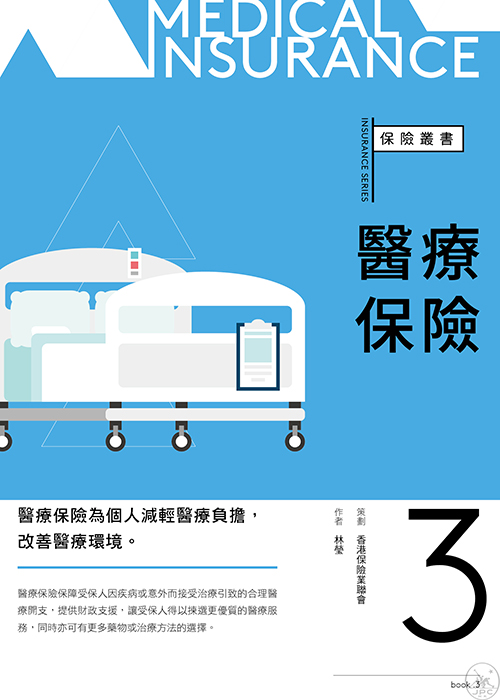Reasonable and customary charges
Why cannot I get full compensation even if I have medical insurance?
Mei-fan’s physical condition has been poorer over the past year, with significant weight loss and intermittent breathing difficulties. Last month, she underwent a “fine-needle aspiration cytology” test, which confirmed that she had thyroid nodules. The doctor recommended a Thyroid Nodule Removal Surgery, Lymph Node Biopsy and removal surgery at the end of this month.
She sighed in the car, worried about the surgery, but also puzzled by the insurance company’s decision. The insurance company said that the reasonable fee for the surgery is about HK$100,000, and the pre-approval reimbursement amount is HK$115,000, but the doctor’s quotation is clearly HK$180,000. She has to bear the rest by herself. She is confused by the decision of the insurance company.
What is "pre-approval"?
Medical expenses in Hong Kong are expensive, with a single surgery costing over HK$100,000. When people are ill, they often focus on getting treatment and ignore the cost of medical care. In fact, the fees for treatment and methods from different doctors can vary greatly.
To have a clear understanding of the budget, the insured person should first obtain a quotation from the doctor and then apply for pre-approval of the claim from the insurance company.
A low pre-approved amount means that the medical expenses are higher than the market standards
If the insurance company discovers that the charges are too high, they will generally notify the insured person of the approved amount. In Mei-fan’s case, the pre-approved amount was lower than the fee level suggested by the doctor, indicating that the insurance company believed that the surgical fee was higher than the market standards.
As a patient, Mei-fan can carefully consider whether it is worth paying the difference out of her own pocket before admission or looking for other options.
Group medical insurance can help reduce out-of-pocket expenses for the insured
On the other hand, if the insured person holds more than one individual medical insurance or the company provides group medical insurance, they can also study the policy terms, claims requirements, and procedures before surgery.
After completing the formal claim with pre-approval, they can apply for compensation from a second insurance company to reduce the out-of-pocket expenses.
Can reimbursement of the actual medical cost avoid out-of-pocket payments?
Mei-fan suddenly thought, “Since the price quoted by the doctor is so different, can I skip the pre-approval and then claim after the surgery, based on actual expenses with the receipt?”
The insured can certainly claim based on actual expenses, but whether applying for pre-approval or claiming afterward based on actual expenses, the insurance company will pay for medical expenses based on the “reasonable and customary” principle in the policy, and expenses beyond the coverage will have to be paid for by the patient.
Therefore, the amount of compensation is not related to the method of claiming, and on the contrary, “pre-approval” is more helpful for the insured to arrange reasonably priced and suitable medical services and hospitals/clinics, thereby reducing out-of-pocket payments. The amount of compensation mainly depends on the “reasonable and customary” fee in the policy.
"Reasonable and customary" is an important principle for determining compensation amounts
Mei-fan bought insurance, but not all of her medical expenses were fully compensated, which made her complain. However, she needs to understand that the insurance company only compensates for reasonable charges, and the “reasonable and customary” clause in the policy is a major principle for determining medical compensation amounts.
Evaluation criteria for reasonable and customary charges
The insurance company mainly refers to the fees of private hospitals, medical institutions, surgeons, claims data, and the Hospital Authority’s private service fees for the same type of surgery when evaluating “reasonable and customary” charges.
The total cost of surgery depends on the type of surgery, room level, private hospital, doctor’s fees, length of hospital stay, etc., so the fees will differ. For example, the difference in fees between a common gastroscopy, colonoscopy, or polypectomy surgery in a general ward and a private ward can be as high as HK$20,000 to HK$30,000.
Arbitrarily making full compensation is also harmful to the insured
As the gatekeeper of medical insurance, the insurance company must fulfill its claims responsibility while adhering to the “reasonable and customary” principle to maintain the public interest as a whole.
Just imagine, what would happen if the insurance company compensated arbitrarily. In the long run, it will push up medical inflation, increase insurance costs, and ultimately transfer the cost to policyholders by raising premiums, while non-policyholders may lose their choice due to the inability to afford abnormally expensive private medical services.
In Mei-fan’s case, the insurance company confirmed that the “reasonable and customary” fee for the same type of surgery was approximately HK$100,000 by referring to the market fee level.
Considering Mei-fan’s doctor’s specialty experience, the insurance company pre-approved a compensation amount of HK$115,000, which is higher than the reasonable fee for the same type of surgery, thus protecting the rights of policyholders.
The insurance company uses “reasonable and customary” as the principle for approving claims to protect social resources and the interests of all policyholders, prevent abuse, and prevent medical inflation from getting out of control like an unrestrained horse, which would affect everyone.
Take reference to the market medical service fees
In recent years, the government has promoted transparency in private medical service fees to protect consumer information rights and enhance market competition.
Private medical institutions are required to publicly disclose common non-emergency surgery fees for the use of standard wards within a specific period of time in a comprehensive table format, generally including the following information:
- The median fees for services in the middle and high price range.
- In addition to the total fee, the table lists the three main charges:
- doctor fees, including surgical fees and specialist fees;
- anesthesia fees
- hospital fees, including service fees, accommodation fees, surgical consumables, and related material costs, nursing fees, total check-up fees, medication, meals, drinks, and general miscellaneous expenses
- The average length of hospital stay is also included
The table lists common surgeries such as gastroscopy and colonoscopy, polypectomy, hernia repair, Lumpectomy, knee arthroscopy, and the thyroid nodule removal surgery that Mei-fan is about to undergo.
Patients can compare their doctor’s fees with the reference fees in the table by searching for relevant surgery fees online after receiving a quote, allowing consumers to make informed choices and arrangements.
Some private hospitals also publish room rates for different levels of accommodation and basic fees for surgery packages on their websites.
However, it should be noted that the prices published by most private hospitals are only “estimates,” not “quotes,” and cannot be equated with the actual bill.
The actual fees will be affected by factors such as the length of time and complexity of the surgery, the patient’s individual condition, and the tools, instruments, medications, and consumables used during the pre-surgery check-up and operation.
Patients can also refer to the “private fee schedule” published by the Hospital Authority (HA) for public hospitals. In recent years, the government has increased transparency to make fees clearer, and the HA’s table now includes the fee levels for various private services. Details can be found on the HA’s website.
Understanding "Meal Expenses" and Compensation Principles
Siu-bo is a 3-year-old child who was hospitalized due to a sudden and persistent fever and was later found to have bronchitis.
One day, Siu-bo’s grandfather, Uncle Chen, discovered that the relatives of the patient in the next bed were ordering food and realized that the hospital insurance provided food protection. He was shocked that he had missed out on his “rights” for the past few days, so he took advantage of the last opportunity before his granddaughter was discharged to order a feast and indulge himself. However, the compensation for “room and board” may not be sufficient to cover this.
What is “Room and board”?
The “Room and board” item of hospital insurance compensates the insured for the meal & ward staying expenses incurred during the treatment period as a registered inpatient and must comply with the basic principles of “reasonable and customary” compensation.
When the insurance company receives a claim for “room and board,” it will assess whether the related expenses are normal, reasonable, and actual expenditures for the insured’s enjoyment, as the basis for compensation, to avoid abuse.
In the example above, the insurance company will consider whether a 3-year-old child with persistent fever and discomfort can eat all the food ordered on that day. The insurance company will assess reasonable room and board expenses based on the standard amount of food normally consumed by a sick child, such as a basic meal consisting of simple and light foods like porridge, noodles, or rice, to determine the amount of “room and board” that will be approved.
Calculation Method for “Room and Board”
Some traditional medical insurance plans include “meal” under the “Daily Room and Board Expenses” item, meaning that the daily ward rent and meal expenses cannot exceed the daily maximum benefit amount listed in the coverage table.
Assuming that Siu-bo’s policy has a daily maximum benefit limit of HK$800 for “Room and Board,” if the rents for the ward are less than HK$800, the remaining amount can be used for the meal expenses.
The calculation method for “Room and Board” is based on a daily independent calculation during the hospitalization period, rather than a total number of days. Therefore, policyholders cannot reallocate the spending just to get the expenses for meals claimed.
Say after deducting the ward expenses, Siu-bo’s hospitalization plan can claim a daily meal expense of HK$200, even if Uncle Chen did not order food for Siu-bo during the first two days, the unused balance cannot be transferred to other days.
In other words, if Siu-bo is hospitalized for 4 days but only orders food for one day, compensation can only be claimed for the food ordered on that particular day.
Author and Book Intro
This article is written based on the content from “Insurance Series: Medical Insurance,” a joint publication by the Hong Kong Federation of Insurers and Joint Publishing HK.

About the Hong Kong Federation of Insurers
The Hong Kong Federation of Insurers (HKFI) was established on August 8, 1988, with the aim of promoting and advancing the development of the insurance industry in Hong Kong. It currently has over 130 member companies and is the government-recognized representative organization of the insurance industry.
The HKFI has always maintained close contact and dialogue with the authorities, regulatory agencies, and stakeholders to negotiate matters affecting the insurance industry. At the same time, it actively promotes the professional standards of the insurance industry and encourages its development. It is also committed to educating the public about insurance, thereby strengthening confidence in the industry among citizens.
